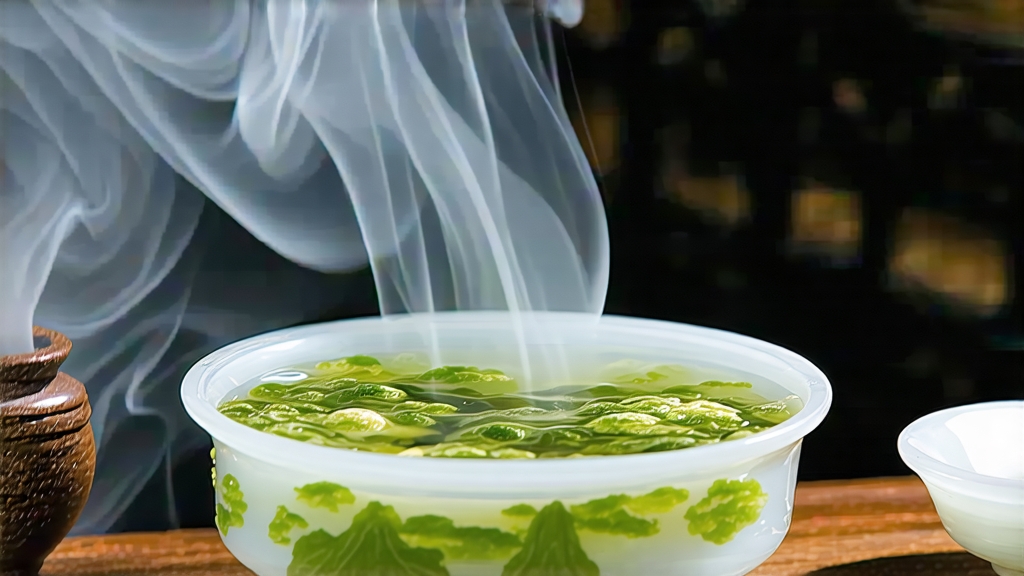
Walk into any serious tea house from Taipei to Toronto and you will almost certainly find a tidy canister whose label reads “Tie Guan Yin.” To Western eyes the name looks cryptic; to Chinese ears it is poetry—“Iron Goddess of Mercy.” Behind those four syllables lies five centuries of craft, prayer, trade wars, and sensory obsession. This essay invites the international drinker to move beyond the teabag and meet the living legend that re-defined what oolong can be.
-
A myth that forged an industry
Legend places the birth of Tie Guan Yin in the Yongle era (1403-1424) of the Ming dynasty. A devout farmer named Wei Yin lived in Anxi, Fujian. Every dawn he climbed the rocky path to a forgotten temple housing a weather-worn statue of Guan Yin, the Bodhisattva of Compassion. Wei swept the courtyard, lit incense, and prayed. One night in a dream the goddess guided him to a tiny shrub growing between two boulders behind the shrine. “Cherish this,” she whispered. Wei dug it up, transplanted it in his field, and the next spring produced a tea so fragrant that neighbors swore the leaves smelled like temple orchids. The cultivar was named “Tie” (iron) to honor the statue’s metallic core and “Guan Yin” to record the divine visitation. Historians now agree the story was circulated by Qing-era merchants to brand Anxi tea in the competitive port of Xiamen, but the myth still shapes every auction and every farmer’s first prayer of the season. -
From one cultivar, five stylistic paths
Modern botany identifies the original bush as a genetically unique strain of Camellia sinensis var. sinensis, later dubbed “Hong Xin Wei Tou” (red-heart, tilted-head) because the leaf base blushes red and the apex bends like a bow. From this mother stock Anxi horticulturists selected clonal variations that respond differently to altitude, season, and finishing technique. Today five stylistic paths dominate the market:a) Modern Light Tie Guan Yin – Jade green, 20-30 % oxidation, zero roast. Vacuum-sealed within six hours of finishing to lock in alpine florals.
b) Moderate Roast – 25 % oxidation followed by 3-5 hours of 80 °C charcoal turning; orchid turns to honeydew and toasted almond.
c) Heavy Roast “Nong Xiang” – 30 % oxidation, month-long charcoal baking at descending temperatures; liquor the color of topaz, aroma of chestnut and burnt sugar.
d) Old Tree Guan Yin – Bushes 60-120 years old, seed-propagated, left semi-wild on 1,000 m cliffs; oxidation decided by intuition, finish often sun-dried; mineral backbone reminiscent of Wuyi rock teas.
e) Aged Tie Guan Yin – Any of the above stored in unglazed clay jars for 5-25 years; periodic charcoal re-firing every 36 months; develops camphor, dried longan, and medicinal depth prized by Chaozhou gourmands. -
The craft: when chemistry meets choreography
Harvest begins at dawn when dew still pearls the leaf. Only the standard “open leaf” trinity is plucked—mature blade, central vein, and adjacent bud. The goal is to balance grassy tannins with precursor sugars that will later caramelize during roasting. After solar wilting for 30 minutes the leaves are loaded onto round bamboo trays and “shaken” every hour for 18-24 hours. This yao-qing (rocking-green) bruises the margins, jump-starting oxidation while the midrib stays green. Master craftsmen listen for a rustle that sounds like distant rain on silk; when that timbre arrives they know enzymes have reached the sweet spot. A short 200 °C tumble in electric kill-green locks the partial oxidation at 25-30 %. Next comes rolling—first vertical pressure to break cell walls, then a rapid spiral that twists the leaf into the signature “dragonfly head, frog leg” pellet. The pellets are dried at 60 °C until moisture drops to 7 %, sorted by weight, and finally baked. Charcoal baking uses no wood smoke; embers are buried in ash so only infrared heat caresses the leaf. A single lapse in timing can turn orchid into cardboard. -
Terroir: why Anxi tastes like no other place
Anxi County sits on the 25th parallel,